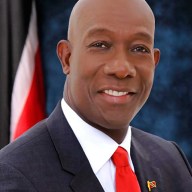At year’s end, everyone’s eyes were on what is now known as the “fiscal cliff.” At the eleventh hour, Congress came to a deal on taxes and unemployment, effectively holding off automatic budget cuts until this March. Now we will likely see a showdown on government spending.
With revenue largely off the table for future negotiating, we need to resolve our budget woes by putting the breaks on runaway government spending in a balanced, strategic way. Given that the Pentagon budget makes up more than half of all discretionary spending, smart savings there should be a key part of the solution to the current budget battle.
Rather than thinking incrementally, policymakers should rise to the challenge of adjusting our national security strategy by crafting a budget deal that funds programs based on their real contribution to our security. The Pentagon budget has grown exponentially over the past decade with relatively little scrutiny while political battles have primarily focused on revenue and domestic spending. This does a disservice to both our economic and security needs.
Despite the winding down of two wars, the Pentagon still has the highest budget in real dollars since World War II. It’s time to reexamine Pentagon spending with an eye towards our long-term strategic goals instead of allowing unnecessary or strategically marginal programs to continue to coast on their own momentum.
For example, we are currently slated to spend $640 billion over the next decade on a nuclear arsenal far larger than we need and more relevant to the Cold War than the threats we face today. The bloated nuclear budget includes a $6 billion factory to produce new plutonium cores for nuclear bombs and a $10 billion life extension program for the nuclear weapons deployed in Europe. Eliminating unnecessary nuclear programs will save billions of dollars that can then be invested in more effective defense programs.
Billions more will be spent on tanks the Army doesn’t want and maintaining large numbers of troops in Europe to prevent an invasion from the now defunct Soviet Union.
A growing number of policymakers agree that it’s time for us to reshape the Pentagon budget to address our 21st century needs. Many fiscal conservatives elected in 2010 and re-elected this year agree that the “sacred cow” of Pentagon spending should be part of our budget solution. And late into the fiscal cliff debate, Secretary of Defense Leon Panetta pleaded with Congress to cut expenditures that “needlessly divert $74 billion over the next decade into programs, equipment and activities we don’t want or need.”
Reshaping Pentagon spending to bring our national security strategy in line with 21st century needs will make us stronger in the long run. Frankly, we bog the military down when we let wasteful spending go unchecked as we are largely doing, once again.
There are those that claim that Pentagon spending should be immune to fiscal discipline, but this fails to consider the full picture of our national security. America’s ability to compete in a global economy is our greatest asset. This requires that we equally invest in job creation and education as well as the traditional elements of defense.
A strong economy benefits our troops as well. We can best support our service personnel serving throughout the world by investing in 21st century capabilities, not Cold-War relics.
The budget showdown should be the push that we need for both parties to work to develop a more effective national security strategy today.
There is a growing consensus for adjusting our spending priorities to address 21st century challenges and the Pentagon budget should remain on the table in the year ahead. Our national security tomorrow depends on policymakers making smart and strategic budget decisions sooner rather than later.
———-
John Adams is a retired brigadier general with more than 30 years of service and a member of the Consensus for American Security, an advisory group to the nonpartisan American Security Project.


















